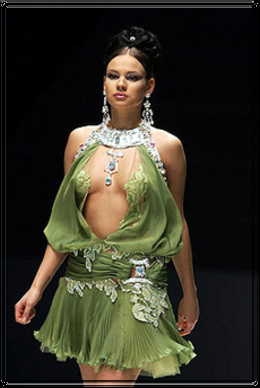kajira Branding Collars Slave Type Ceremony

~Notes on Gorean
Slave Clothing~
Having gone through the series of books and retrieved the definitions for the clothing, slaves wore; and has done research, gathering and weight the different descriptions. This does not include the silks; I hope this helps T/those who would just like a bit more information on the clothing.
camisk
(noun): simple, poncho-like slave garment, about 18" wide: a hole cut
in the centre for the head, belted at the waist
The camisk is a rectangle of cloth,
with a hole cut for the head, rather like a poncho. The edges are commonly
folded and stitched to prevent ravelling. The camisk, I am told, normally
falls to the knees...The camisk, I am told, was at one time commonly belted
with a chain. However, the camisks that I have personally seen, and those
we were given, were belted with a long, thin strap of leather binding fibre.
This passes once around the body, and then again, and then is tied, snugly,
over the right hip....The belt of binding fibre not only makes it easier to
adjust the camisk to a given girl, but of course, the binding fibre serves
to remind her that she is in bondage. In a moment it may be removed, and she
may be secured with it, leashed, or bound hand and foot....The camisk, in
its way, is an incredibly attractive garment. It displays the girl, but provocatively.
Moreover, it proclaims her slave, and begs to be torn away by the hand of
the master. Men thrill to see a girl in a camisk.
Captive of Gor: Page 64
binding fibre
(noun): stout twine made of strips of leather or of a fibre like hemp; a piece
long enough to circle a slave girl’s waist 2-3 times is often used as
a belt for her slave tunic
camisk, Turian
(noun): a style of camisk worn by slaves in the city-state of Turia; cloth
shaped like an inverted 'T' with a bevelled crossbar fastened behind the neck
& falls before the wearer's body; the crossbar then passes between her
legs & is then brought forward snugly at the hips ; it is held in place
by a single cord that binds it at the back of the neck, behind the back, &
in front at the waist; think of a t-shirt, that barely covers the crouch.
chalwar
(noun): baggy pants of diaphanous silk, worn by slave girls of the Tahari;
similar to the harem trousers of Earth
chatka
(noun): the strip of black leather, some 6 inches by 5 feet long, worn like
a breech- clout over the curla by the slave girls of the Wagon Peoples
curla
(noun): the red waist cord worn slave- girls of the Wagon Peoples; supports
the chatka
clad Kajir
(phrase): among the Wagon Peoples, this phrase refers to slaves who wear four
articles; the curla, chatka, kalmak and koora.
finger symbols
(noun): in pairs, made usually of shinny brass...or metal, little round disks,
that attach to the forefinger and thumb, that when clashed together in patterns,
make a clinging sound
kalmak
(noun): vest of black leather worn by the slave girls of the Wagon Peoples
kes
(noun): short tunic of black leather worn by the male slaves of the Wagon
Peoples
kirtle
-(noun): the garb of a slave girl of the Torvaldsland is a thin white woollen
garment ankle-length with a deep plunging neckline.
Marauders of Gor, page 81
koora
(noun): strip of red fabric worn as a headband by the slave girls of the Wagon
Peoples
pleasure silk
(noun): sheer, clingy form of silk worn only by slave girls; wraps like a
pareau, with a disrobing loop at the left shoulder
slave veil
(Noun): a small triangle of diaphanous yellow silk, worn across the bridge
of the nose and covering the lower half of the face; it parodies the heavy
veils worn by free women, as it conceals nothing and often arouses the lust
of masters
slave livery
(noun): a much more modest garment, consisting of an over-the-head piece of
clothing not unlike a "sheath-dress" or sun dress. These tend to
be simple, brief (usually covering the wearer to the middle of the thigh)
and are often employed for tower slaves, work slaves, or household and domestic
slaves.
slave rag
(noun): a one-piece, sleeveless, short slave garment
talmit
(noun): headband
ta-teera
(noun): similar to a slave tunic, but more ragged and revealing
zills
(noun): finger symbols used in dances